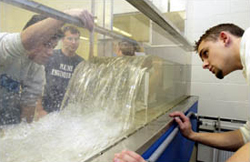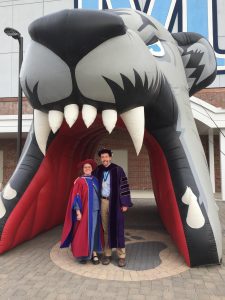About Us

The department of Civil engineering is one of the oldest departments at the University of Maine with the first graduating class awarded in 1872.
Civil engineers are primarily responsible for planning, designing, and constructing facilities to serve society. They work on projects such as roadways, railroads, bridges and tunnels, pipelines, airports, harbors, hydroelectric dams and power plants, irrigation and flood control projects, foundations and frames of buildings, water purification plants, pollution control facilities, and environmental protection projects.
 At The University of Maine, a civil engineer may specialize in one or several of these areas and may further specialize in a particular function, such as design or management. Consequently, the curriculum provides a broad-based program stressing the fundamentals common to the many branches of civil engineering. This curriculum is designed to provide the student with a well-founded civil engineering education while allowing the student the option of selecting electives in one or more disciplines such as environmental, geotechnical, structures, transportation, water resources, construction, and coastal engineering. Course work also is provided in the humanities and social sciences to give the student a broader view of cultural, political, and economic aspects of society and their relationship to engineering.
At The University of Maine, a civil engineer may specialize in one or several of these areas and may further specialize in a particular function, such as design or management. Consequently, the curriculum provides a broad-based program stressing the fundamentals common to the many branches of civil engineering. This curriculum is designed to provide the student with a well-founded civil engineering education while allowing the student the option of selecting electives in one or more disciplines such as environmental, geotechnical, structures, transportation, water resources, construction, and coastal engineering. Course work also is provided in the humanities and social sciences to give the student a broader view of cultural, political, and economic aspects of society and their relationship to engineering.

The civil engineering faculty members at the University of Maine understand what it takes to make learning come alive. They introduce the world of academics to students through team projects, formal lectures, informal discussions, practical experience, and labs. They help students conceive, design, and build projects like composite beams and timber bridges. In turn, students develop critical thinking skills, technical writing ability, and oral presentation skills, preparing them to assume leadership roles in their careers and to meet the challenges of engineering in the 21st century.
